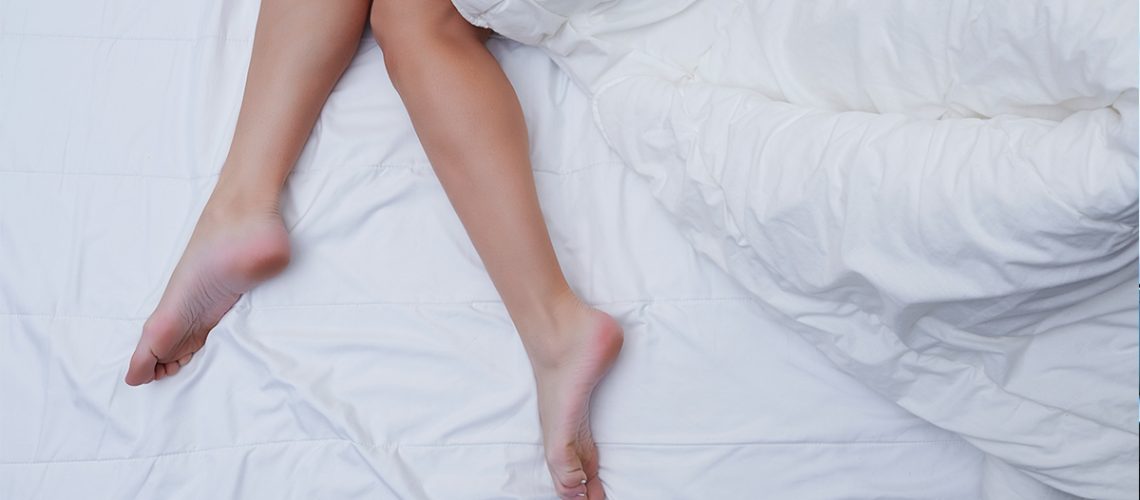Physical discomfort in your legs, especially when you don’t know the cause or how to relieve it, is hard enough to deal with. But when you combine that with possible mood disorder symptoms like depression, it’s time to look for help. Ketamine might be just what you need.
What is RLS?
Restless legs syndrome (RLS) is a disorder that triggers an uncontrollable desire to move your legs, generally due to an uncomfortable feeling. It often happens in the nighttime hours or evening while you’re lying or sitting down but moving may bring temporary relief.
Restless legs syndrome can start at any age and normally worsens the older you get. It can disturb sleep and interfere with daily life. However, you can manage your symptoms with proper treatment.
What Causes RLS?
In most cases, it’s hard to determine the cause of this condition. But RLS has a genetic component and is sometimes seen to run in families with a history of the illness, where the symptoms typically begin before the age of 40. Other possible causes include:
- Hemodialysis and end-stage renal disease.
- Low iron levels.
- Certain types of medicine.
- Use of alcohol, caffeine, and nicotine.
- Pregnancy, particularly during the last trimester; in most instances, symptoms usually subside within four weeks of giving birth.
- Nerve damage.
- Sleep deficiency and other sleep conditions.
Know the Symptoms
People with RLS experience the irresistible call to move, paired with uncomfortable feelings in the lower limbs distinct from normal sensations felt by someone without the disorder. These sensations are often hard to describe but may be characterized as pulling, itching, aching, throbbing, crawling, or creeping. These feelings don’t usually affect your arms and the chest or head less often. They can happen on one or both sides of your body with varying intensity.
RLS & Mood Disorders
Some studies have shown that RLS symptoms occur before those related to depression or anxiety, and some people equate the severity of symptoms to the intensity of mood disorder symptoms. Researchers have documented the links between the sleep disturbance caused by RLS and participants’ mood indications.
Restless legs syndrome and periodic limb movement disorder can disturb the quality and quantity of sleep. Because of these conditions, people with sleep trouble may have problems focusing during the day, and some get depression, experience mood swings, or encounter other health issues.
Comorbidities of RLS
It’s not uncommon for RLS to be accompanied by various conditions and mood disorders:
- Insomnia is a common sleep disorder making it hard to fall and stay asleep or causes you to wake up early and keeps you from getting back to sleep.
- Clinical depression negatively affects your feelings, how you think, and your actions.
- Bipolar disorder triggers uncommon shifts in mood, energy and activity levels, concentration, and how you complete daily tasks.
- Schizoaffective disorder is a condition that presents symptoms of psychotic and mood disorders during a single incident or within a few weeks of each other. The word “schizoaffective” has two components: ‘schizo–’ for psychotic symptoms and ‘–affective’ for mood symptoms.
- Cyclothymia triggers emotional highs and lows, but they’re not as dangerous as what you’d see with bipolar I or II disorder. You may experience cases when your mood markedly shifts up and down from what you’d consider being normal.
- Persistent depressive disorder means you experience a low mood for at least two years while accompanied by at least two other depression symptoms.
- Anxiety disorders, like generalized anxiety disorder and separation anxiety disorder.
- Like arthritis and lower back pain, chronic pain disorders affect nearly three million people a year.
Some medicine or treatment options like ketamine therapy have been known to soothe RLS symptoms and mood disorders, but research is ongoing.
Diagnosis & Treatment
If you think you have RLS or a mood disorder, a medical professional can offer an initial diagnosis. For RLS, you’ll be asked to provide your medical history – both personal and that of your family – and to describe your symptoms. The International Restless Legs Syndrome Study Group provides information on specific criteria. The examination may also uncover a medical problem triggering mood disorder symptoms. Otherwise, you’ll be referred to a mental health specialist for further assessment.
RLS treatment may include medicine, muscle relaxers, and sleep therapy. Mood disorders are typically treated with psychotherapy, but both may benefit from ketamine treatment.
Final Thoughts
If you’re suffering from either RLS or a mood disorder, don’t wait until symptoms either control your daily life or negatively impact how you live. With the proper treatment – psycho or physical therapy, medicine, muscle relaxers, lifestyle changes, or ketamine treatment – you can start living a productive life again.

